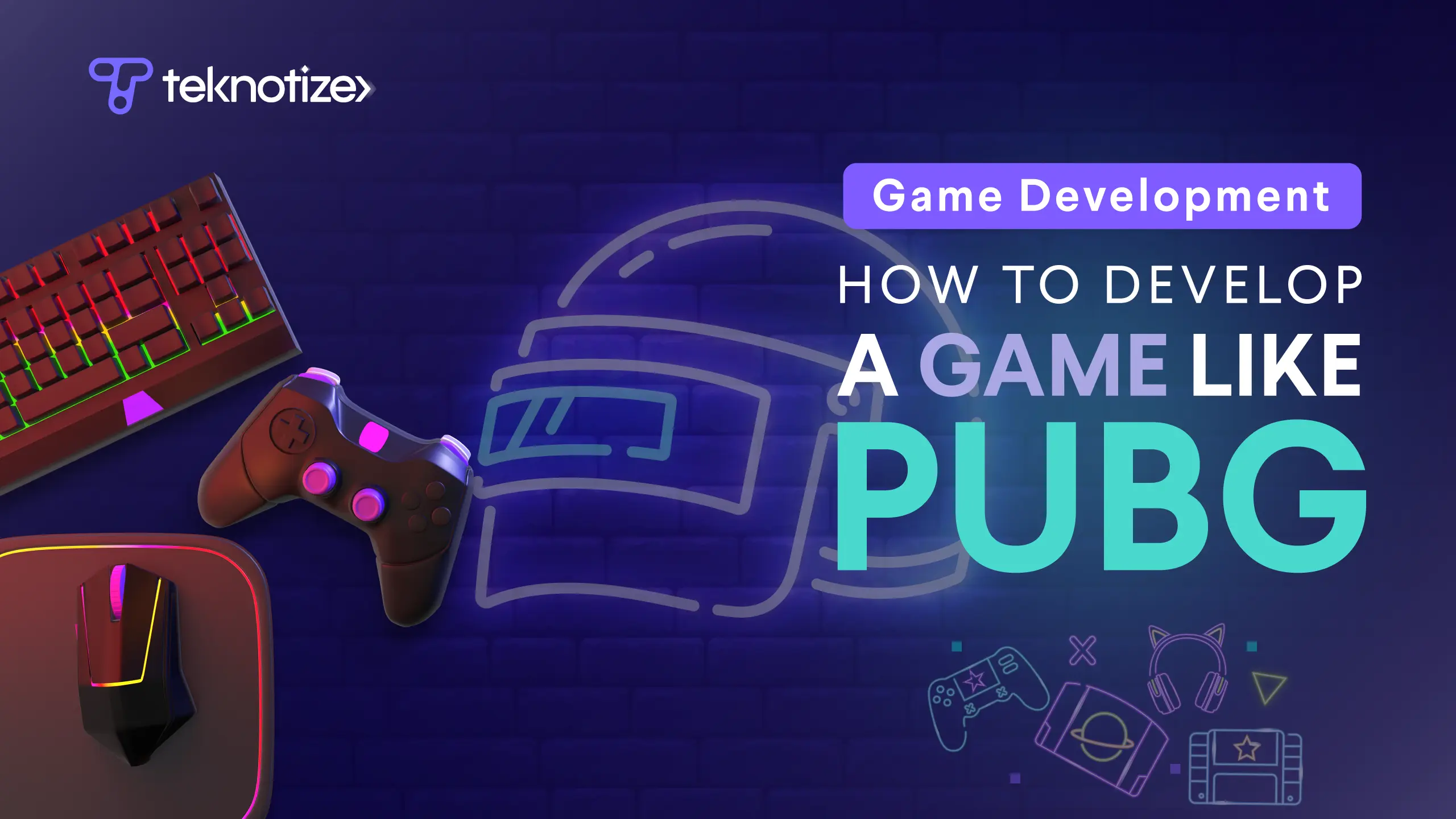
In recent years, battleground games have taken the gaming industry by storm, with PUBG being one of the most successful examples. If you’re interested to develop a game similar to PUBG, it’s important to understand the key elements that contribute to its popularity.
While game development is a complex and time-consuming process, this article provides an alternative perspective to develop a game, covering crucial aspects without skipping any important points.
Understanding the Appeal
Before delving into the development process, it’s essential to comprehend the factors that make games like PUBG so successful. PUBG’s captivating concept revolves around 100 players fighting for survival on a vast island, with the last person standing crowned as the winner. Its unique strategy of launching the mobile version in selected regions for testing purposes played a significant role in its success. The game’s eye-catching graphics, customizable controls, remarkable user experience, and free-to-play model with in-app purchases have all contributed to its widespread popularity.
Planning the Development Process
Developing a battleground game of similar scale and quality to PUBG requires careful planning and meticulous execution. While it’s challenging to estimate the exact development time and cost, a well-structured approach can help guide the process effectively.
1. Conceptualization and Design
- Define the core mechanics, gameplay elements, and overall vision for your game.
- Create a detailed game design document outlining key features, environments, characters, and weapons.
- Consider factors such as game duration, multiplayer capabilities, and monetization strategies.
2. Technology Stack
- Select a suitable technology stack based on your development team’s expertise and the desired platform(s) for your game.
- Consider options like Unity, Unreal Engine, or custom engines based on your specific requirements.
- Depending on your chosen technology, you may work with programming languages such as C++, C#, Python, or JavaScript.
3. Art and Graphics
- Develop a unique art style and visual identity for your game.
- Design high-quality 3D models, textures, and animations for characters, environments, and objects.
- Focus on optimizing graphics performance for different platforms and devices.
- 4. Game Mechanics and Features:
- Implement the core gameplay mechanics, including shooting, movement, inventory management, and interaction systems.
- Create a realistic and immersive environment with dynamic weather, day-night cycles, and destructible elements.
- Incorporate a variety of weapons, vehicles, and equipment to enhance the gameplay experience.
4. Multiplayer Functionality
- Integrate multiplayer capabilities to allow players to compete against each other.
- Implement matchmaking systems, server infrastructure, and network optimizations for a seamless multiplayer experience.
- Consider adding options for both solo and team-based gameplay.
5. Testing and Refinement
- Conduct thorough testing and debugging to ensure a stable and bug-free game.
- Collect player feedback and iterate on gameplay mechanics, balance, and user interface based on user testing and community engagement.
- Continuously optimize performance, address issues, and release updates to enhance the overall player experience.
Cost Estimation
Estimating the cost of developing a game like PUBG can be challenging, as it depends on various factors such as the complexity of the game, team size, development time, and specific requirements. However, as a rough estimate, developing a game of similar scale and quality to PUBG can range from hundreds of thousands to millions of dollars.
Here are some cost factors to consider:
1. Development Team
Hiring skilled developers, designers, and artists will contribute to the development cost. The size and expertise of the team will impact the overall budget.
2. Technology and Tools
Licensing fees for game engines, software, and other development tools need to be considered. The choice of technology stack may also affect the development cost.
3. Art and Graphics
Creating high-quality 3D models, textures, animations, and visual effects can be a significant expense. The complexity and level of detail required will impact the cost.
4. Audio
Hiring composers, sound designers, and voice actors, as well as audio production and integration, will contribute to the budget.
5. Infrastructure and Networking
Setting up servers, networking infrastructure, and implementing multiplayer functionality can add to the overall cost.
6. Testing and Quality Assurance
Allocating resources for testing, bug fixing, and quality assurance is crucial to ensure a polished and stable game.
7. Marketing and Promotion
Promoting the game through marketing campaigns, influencer partnerships, and user acquisition strategies should be factored into the budget.
It’s important to note that the cost estimation provided here is a general guideline, and the actual expenses may vary significantly based on the scope and scale of your specific project.
Conclusion
Developing a battleground game like PUBG is an ambitious undertaking that requires a comprehensive understanding of game development principles and a dedicated team with expertise in various domains. By following a well-structured development process, planning meticulously, and considering the key elements discussed, you can create a captivating and engaging battleground game that resonates with players.
Remember that Game Development is an iterative process, and continuous improvement based on player feedback is crucial for long-term success.


Add a Comment